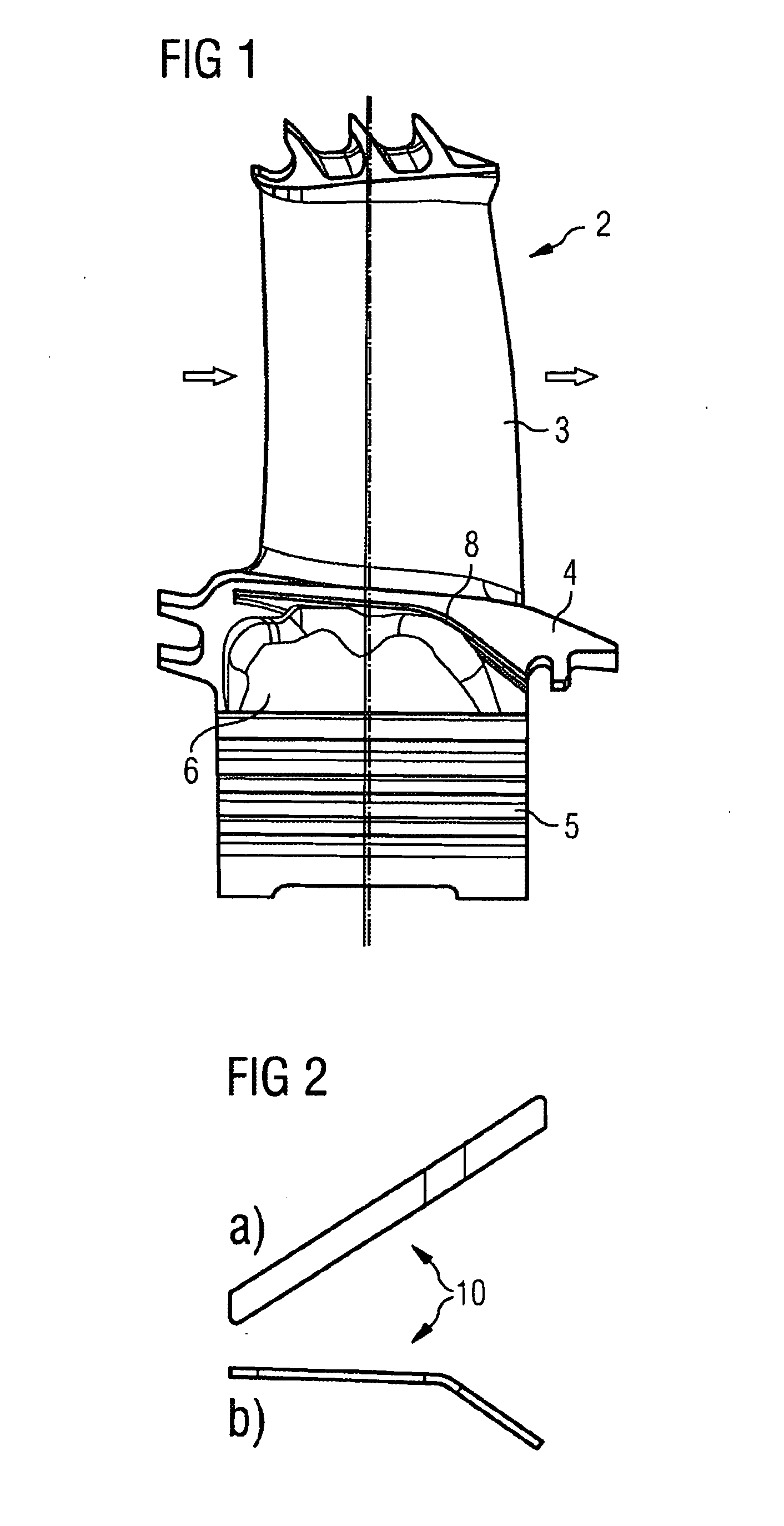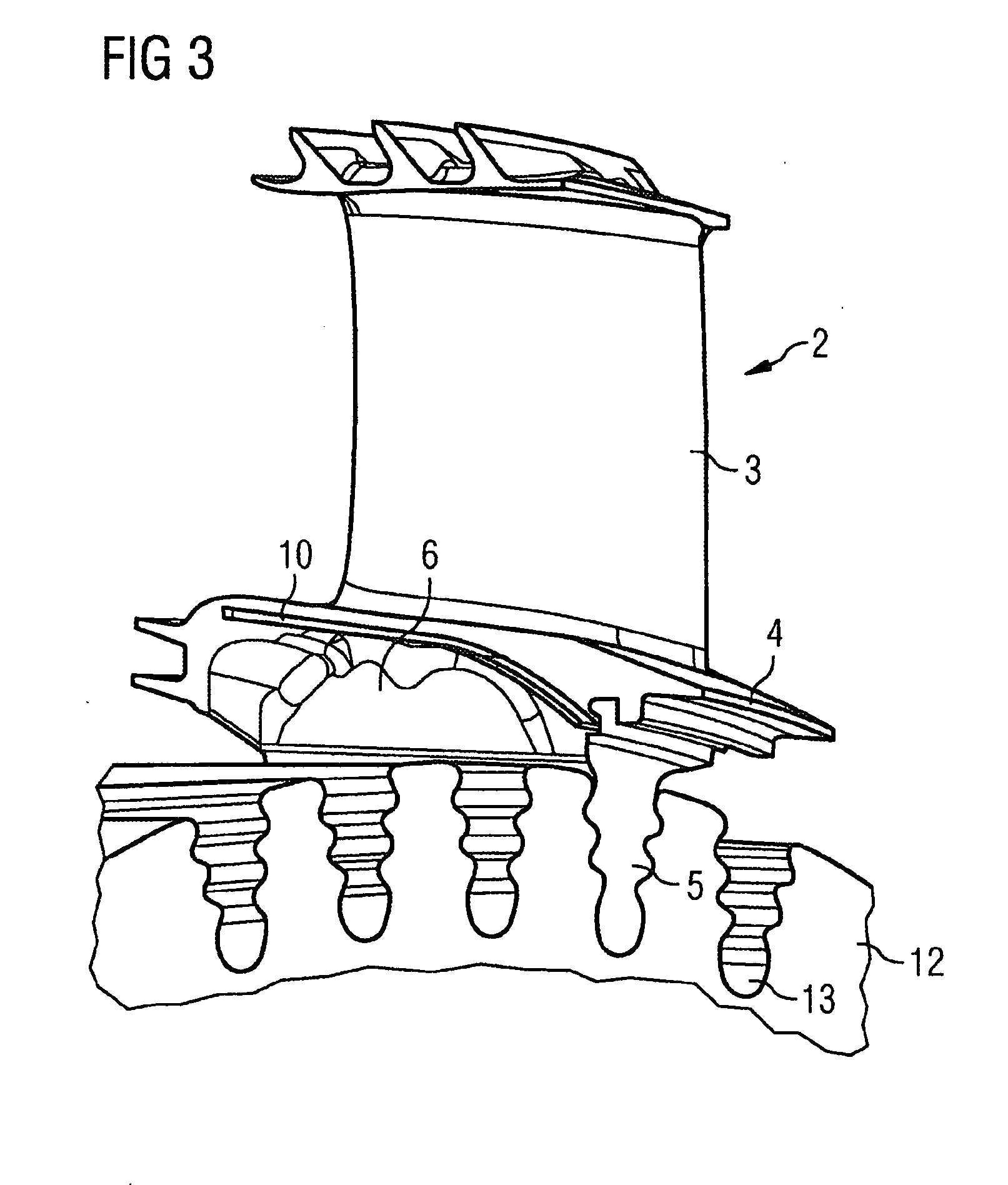Turbine blade assembly
a technology of turbine blades and assembly parts, which is applied in the direction of blade accessories, waterborne vessels, machines/engines, etc., can solve the problems of loss of efficiency, inability to introduce seal strips using the conventional sequential build methodology, and inability to heat disc rims. to achieve the effect of convenient assembly and disassembly
- Summary
- Abstract
- Description
- Claims
- Application Information
AI Technical Summary
Benefits of technology
Problems solved by technology
Method used
Image
Examples
Embodiment Construction
[0023]FIG. 1 shows a side view of a turbine blade 2 with a airfoil 3, a platform 4, a blade root 5, a root cavity 6 and a slot 8.
[0024]The platform 4 is placed at the bottom of the airfoil 3 and covers the root cavity 6 that is formed between the blade root 5 and the platform 4. A slot 8 is integrated into each side of the platform 4 running along the top of the root cavity 6. When assembled to a turbine disc 12 two slots 8 of two adjacent turbine blades 2 are in an opposed position to hold a seal strip 10 from two sides. The slots 8 are closed towards the upstream end for retention and open towards the downstream end of the turbine blade 2 for insertion. Each two opposed slots 8 are provided as guides and retentions of a seal strip 10.
[0025]The turbine blade 2 is used in a gas turbine where hot pressurized gas is guided towards turbine blades with airfoils that are fixed on a rotor to move the turbine blades and thus drive the rotor to which the turbine blades are assembled in a ci...
PUM
| Property | Measurement | Unit |
|---|---|---|
| Flexibility | aaaaa | aaaaa |
| Resilience | aaaaa | aaaaa |
Abstract
Description
Claims
Application Information
 Login to View More
Login to View More - R&D
- Intellectual Property
- Life Sciences
- Materials
- Tech Scout
- Unparalleled Data Quality
- Higher Quality Content
- 60% Fewer Hallucinations
Browse by: Latest US Patents, China's latest patents, Technical Efficacy Thesaurus, Application Domain, Technology Topic, Popular Technical Reports.
© 2025 PatSnap. All rights reserved.Legal|Privacy policy|Modern Slavery Act Transparency Statement|Sitemap|About US| Contact US: help@patsnap.com



